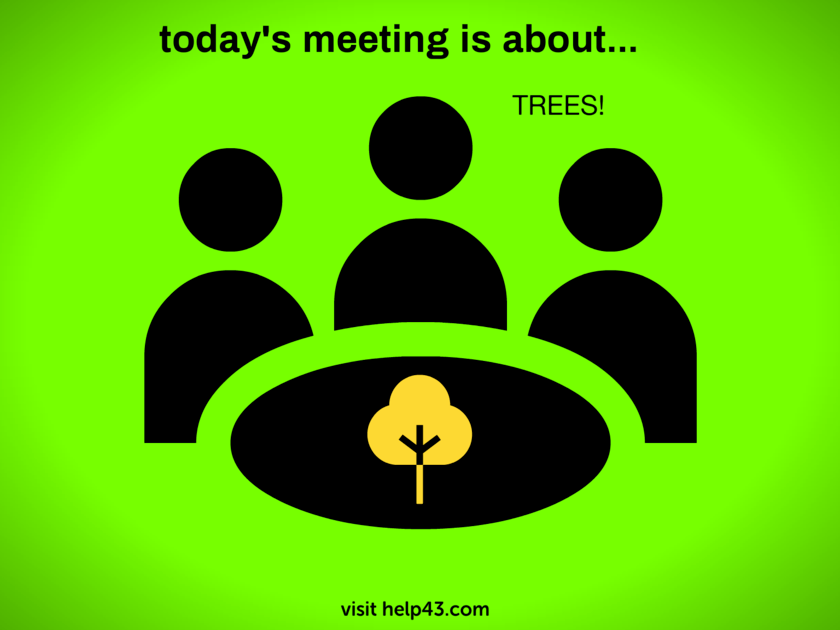Essential Tree Care Tips For Beginners
Tree care isn’t just for seasoned pros. Whether you’ve got a sprawling yard or a single backyard beauty, knowing how to care for your trees can make all the difference. Trees don’t only boost your property’s curb appeal—they also offer shade, cleaner air, and a sense of tranquility.
Why is tree care so important? Trees are living, breathing organisms that need regular attention to thrive. Neglect them, and they can become weak, diseased, or even hazardous. Just like a pet, your trees depend on you for their well-being. Think of tree care as a way to help them grow strong and healthy.
Good tree care starts with understanding the basics. Things like watering, pruning, and fertilizing might sound simple, but each task has its unique set of guidelines. Getting familiar with these will make your tree care routine more effective and less stressful.
Healthy trees provide a myriad of benefits. They improve local air quality by filtering pollutants, serve as habitats for various wildlife, and can even boost your mood. Not to mention, mature trees can increase your property value. Investing time in tree care is like investing in your home’s future.
In this guide, we’ll walk through everything you need to know to get started. From picking the right species to handling pests, you’ll be prepped and ready to cultivate a thriving, green oasis.
Understand Different Tree Species
Trees come in countless varieties, and each one has its own unique needs and characteristics. If you’re new to tree care, learning to identify different species is a crucial step. Start with the basics: Look at the leaves, bark, and overall shape. These features can tell you a lot about a tree and its requirements.
When it comes to picking trees, one size doesn’t fit all. Native species are generally a safer bet because they’re adapted to the local climate and soil. They’re resilient, less prone to pests, and require less maintenance. On the other hand, non-native species might need extra care or special conditions to thrive.
Choosing the right tree can save you a lot of trouble down the road. Think about your local environment—factors like soil type, weather patterns, and sunlight are key. Consult a local nursery or arboretum to find out which species work best for your area.
Don’t just go for what looks good. Sometimes the most attractive tree isn’t the best fit for your yard. Consider the size a tree will reach at maturity; a sapling can grow into a behemoth that overwhelms your space or interferes with power lines. Research beforehand will help you make informed decisions.
Understanding tree species is foundational for good tree care, setting the stage for everything else you’ll do. Once you get the hang of recognizing and choosing the right trees, you’ll find it much easier to cater to their specific care needs.
Essential Tools for Tree Care
Having the right tools can make all the difference between a thriving tree and a struggling one. The good news? You don’t need to break the bank to get started. A few basic tools will set you up for most tree care tasks.
First on your shopping list should be a good pair of pruning shears. These are perfect for making clean cuts on small branches and twigs. For thicker branches, loppers are your best bet. Look for tools with comfortable grips and sharp blades to make the cutting process easier and safer.
A sturdy hand saw is another essential tool. It’s great for cutting through larger branches that pruning shears and loppers can’t handle. Make sure to keep the blade sharp and clean to extend its lifespan and effectiveness.
Next, grab a reliable pair of gloves. Tree care often involves dealing with thorny branches, rough bark, and potentially harmful pests. Gloves protect your hands and improve your grip, making the work both safer and more comfortable.
A good-quality shovel is indispensable for planting new trees or digging around existing ones. Choose one with a comfortable handle and a strong blade that can handle different types of soil. A wheelbarrow can also be handy for moving soil, mulch, and other materials around your garden.
Don’t forget a watering can or hose. Consistent watering is crucial, especially for young or newly planted trees. Opt for a hose with a gentle spray nozzle to avoid damaging the roots and soil structure.
Proper tool maintenance is key. Clean your tools after each use to remove sap and dirt. Sharpen blades regularly and oil any moving parts to keep them operating smoothly. Store tools in a dry, safe place to prolong their lifespan and ensure they’re ready when you need them.
Safety should always come first. Some tasks might require additional gear like safety glasses, ear protection, or a hard hat, especially when you’re dealing with large branches or using power tools.
Plant Trees Correctly
Planting a tree might seem straightforward, but doing it right can set the stage for years of healthy growth. Timing plays a crucial role. While spring and fall are generally the best times to plant, the specific timing can depend on your local climate. The goal is to plant when the weather is mild and the soil is workable.
Start by choosing a proper location. Consider the tree’s mature size, sunlight needs, and proximity to structures or other plants. A well-thought-out location ensures your tree has the space and conditions to thrive without causing future problems.
Digging the right hole is essential. It should be about twice as wide as the tree’s root ball but only as deep as the root ball itself. This allows the roots to spread out more easily, providing a strong foundation. Before placing the tree in the hole, loosen the soil around the edges to help the roots penetrate the soil more effectively.
When positioning the tree in the hole, make sure it’s straight by looking at it from multiple angles. Fill the hole with soil, pressing down gently to eliminate any air pockets. Water thoroughly to settle the soil and provide the tree with a good start.
Avoid the common mistake of planting the tree too deep. The root flare—the part where the roots spread out from the trunk—should be just at or slightly above the soil surface. Planting too deep can suffocate the roots and lead to poor growth or even death.
After planting, mulching around the base of the tree can help retain moisture, suppress weeds, and regulate soil temperature. A 2-3 inch layer of mulch is usually sufficient. Keep the mulch a few inches away from the trunk to prevent rot and pest issues.
Young trees need extra care. Keep them well-watered during their first few years, especially during dry spells. Regularly check for pests or disease, and don’t be afraid to stake the tree if it needs support while its roots establish.
Water Your Trees
Watering might seem simple, but it’s vital for tree health. The right amount of water can make a big difference, especially for young or newly planted trees. Over-watering or under-watering can both spell trouble.
How much water do trees actually need? It varies based on species, age, and weather conditions. Young trees generally need more frequent watering—roughly 10 gallons per inch of trunk diameter every week is a good rule of thumb. For established trees, watering deeply but less often encourages roots to grow deeper, making them more drought-resistant.
The technique you use matters, too. Aim to water the soil, not the leaves or trunk. Watering at the base ensures the roots get what they need and helps prevent fungal diseases that can develop on wet foliage. Using a soaker hose laid around the drip line of the tree is a great way to deliver water gradually and efficiently.
Timing is key. Early morning or late evening is the best time to water, as the cooler temperatures reduce evaporation. This ensures the water reaches the roots rather than evaporating in the heat.
Signs of improper watering are easy to spot once you know what to look for. Leaves wilting, browning edges, or yellowing can signal both under-watering and over-watering. Check the soil moisture about 6 inches below the surface; it should be moist but not soggy. Adjust your schedule based on what you find.
Consistency is crucial, especially in the first few years of a tree’s life. Trees are also much more vulnerable to changes in water availability during these formative years. Setting a regular watering routine can help your trees establish strong roots and adapt to their environment.
Prune and Trimm Techniques
Pruning isn’t just about aesthetics. It’s about promoting healthy growth and preventing problems before they become unmanageable. Understanding when and how to prune can help ensure your trees live long, healthy lives.
Timing plays a vital role. Late winter or early spring is typically the best time for most trees, before new growth starts. Pruning during this dormant season reduces stress on the tree and helps it heal faster. However, some trees like maples and birches are best pruned in late summer or early fall to avoid sap bleeding.
Safety first. Always use sharp, clean tools to make smooth cuts. Dull blades can rip and tear, causing more harm than good. Anticipate the branch’s drop path before you cut, especially larger limbs, to avoid injury or damage.
Different techniques serve different purposes. Thinning, for instance, involves cutting selected branches back to the trunk or large limb to allow light and air to penetrate the canopy. This reduces the risk of disease and promotes healthier growth. Raising involves removing lower branches to provide clearance for pedestrians, vehicles, or structures. Reducing shortens the height or spread of a tree’s canopy, often for safety or aesthetic reasons.
Avoid over-pruning, which can stress the tree and open it up to pests and disease. Generally, never remove more than 25% of a tree’s canopy at one time. For flowering trees, timing also affects blossoms, so prune right after they finish blooming to maintain their showy displays.
Wound care is a hot topic. While old wisdom suggested sealing tree wounds, modern research often advises against it. Trees naturally seal their own wounds with a process called compartmentalization. Artificial wound dressings can sometimes trap moisture and invite decay.
Knowing the specific needs of your tree species helps ensure you’re pruning correctly. Fruit trees, for example, benefit from annual pruning to enhance fruit production, while others might need only occasional trimming.
Fertilize Trees
Giving your trees the nutrients they need sets them up for robust growth. Understanding the basics of tree fertilization can make the difference between a struggling tree and one that’s thriving. Start with a soil test to determine what nutrients your soil might be lacking. Many local extension services offer this testing, and it can give you tailored advice on what fertilizer to use.
Different trees have different nutrient needs, and the type of fertilizer you use should reflect this. Generally, a balanced fertilizer with equal parts nitrogen, phosphorus, and potassium works well. Nitrogen promotes leaf and stem growth, phosphorus supports root development, and potassium enhances overall health and disease resistance.
When and how you fertilize matters. Early spring is a prime time for most trees, just before they start their growing season. Some trees might benefit from a mid-season boost, but avoid fertilizing in late summer or fall as this can stimulate new growth that might not harden off before winter.
Application techniques can vary. For established trees, spreading fertilizer evenly over the root zone is effective. This area generally extends to the edge of the tree’s canopy, known as the drip line. Young, newly planted trees might benefit more from a slow-release fertilizer placed directly around the root zone.
Signs that your tree needs fertilization can include yellowing leaves, stunted growth, or poor development. Regular observation can help you catch these issues early. However, over-fertilizing can be just as harmful as not fertilizing at all, leading to nutrient burn and poor water absorption.
Specialty fertilizers can be useful for certain types of trees. For example, fruit trees may require fertilizers with higher phosphorus content to boost fruit development. Consulting with a local nursery or tree care specialist can provide insights into the best fertilizers for your specific tree species.
Healthy soil leads to healthy trees. Incorporating organic matter like compost into your soil can improve its structure and nutrient content. This creates a more supportive environment for your trees, reducing the need for chemical fertilizers. Regular soil testing and thoughtful fertilization can set your trees on the path to robust health and long-term vitality.
Deal with Tree Pests and Diseases
Every tree can face threats from pests and diseases, and knowing how to tackle them can save your trees and keep them healthy. Start by regularly inspecting your trees for signs of trouble. Look for things like unusual spots on leaves, holes in the bark, or wilting branches.
Identifying the problem is the first step. Common pests include aphids, caterpillars, and beetles, each leaving different signs of their presence. Diseases can be fungal, bacterial, or viral, each with distinct symptoms. If you’re unsure, take a sample of the affected leaves or branches to a local nursery or extension service for diagnosis.
Natural remedies often work well for mild infestations. Solutions like insecticidal soap, neem oil, or even a strong spray of water can dislodge pests. For diseases, removing and disposing of infected plant material can sometimes stop the spread. Again, knowing your specific tree species and its common issues can help tailor your approach.
Chemical treatments might be necessary for more severe problems. Always follow the manufacturer’s instructions and consider consulting a professional for large trees or advanced infestations. Misusing chemicals can harm your tree and the surrounding environment.
Preventive measures are key. Healthy trees are less likely to fall victim to pests or diseases. Proper pruning, watering, and fertilizing can make your trees more resilient. Mulching can help too, by maintaining soil moisture and reducing weed competition, which can harbor pests.
Seasonal care routines can also fend off pests and diseases. For instance, cleaning up fallen leaves and debris in the fall can remove places where pests and pathogens might overwinter. Regularly checking in on your trees throughout the year makes it easier to catch issues early, before they become major problems.
Integrated Pest Management (IPM) is a comprehensive approach combining cultural, mechanical, biological, and chemical tactics to manage pest and disease problems sustainably. Incorporating elements of IPM helps in creating a balanced ecosystem, reducing reliance on chemical treatments, and promoting long-term tree health.
Seasonal Tree Care Tips
Tree care isn’t a one-and-done task. Each season brings its own challenges and opportunities for maintaining tree health. Adapting your care routine to the changing weather can help your trees thrive year-round.
In spring, focus on inspection and early growth. This is the time to check for winter damage and repair any issues before new growth begins. Prune dead or damaged branches and consider applying a slow-release fertilizer to give your trees a nutrient boost.
Summer requires consistent watering and vigilance for pests. Hot weather can stress trees, making proper hydration essential. Mulching helps retain soil moisture and keeps roots cool. Keep an eye out for signs of pests and diseases, and address any issues promptly to prevent them from spreading.
Fall is preparation time. Clean up fallen leaves and debris to reduce pest and disease risks. It’s also a good time to plant new trees and apply mulch to protect roots during the colder months. Prune lightly, focusing on removing dead or diseased wood, but avoid heavy cuts that might stress the tree as it enters dormancy.
Winter care focuses on protection. Snow and ice can break branches, so it’s crucial to inspect after storms and remove any buildup to prevent damage. Wrapping young trees with burlap can protect them from harsh winds and temperature fluctuations. While active tasks are fewer, keeping an eye on your trees ensures they emerge strong in the spring.
By aligning your tree care practices with seasonal needs, you create a supportive environment for sustained health and growth. Understanding what your trees need throughout the year makes you a more effective and proactive caretaker.
Botanicus Plus a GPT for starters and experts
Botnicus Plus boasts an array of new features, enhancing its global appeal and user interaction. These include: 1) Multilingual Support for accessibility in various languages. 2) Virtual Tours of famous botanical gardens and historical plant sites. 3) A Botanical Identification Tool for users to upload and identify plants. 4) Seasonal Guides and Tips tailored to local climates and regions. 5) Opportunities for users to engage in Collaborative Projects and Citizen Science Initiatives. 6) Advice on Sustainable Gardening Practices. 7) Interactive Q&A Sessions with botany experts. 8) Personalized Plant Care Reminders for gardeners. These features enrich Botnicus Plus’s mission to provide comprehensive, interactive, and culturally rich botanical education, fostering a deeper connection with the natural world.
Enjoy!👒

With thoughtful seasonal care, your trees will not only survive but thrive, adding beauty and ecological benefits to your space year after year.
Invest in your future
Take time to learn
Embark on your journey in affiliate marketing and website creation alongside an incredible community and myself. Invest in your future by dedicating time to learn and earn. Take all the time you need to master the basics before aiming higher. Give it a try and sign up for free. You won't regret it! Discover the possibilities for yourself...


